Our flight from Bucharest, Romania, took us to Warsaw, same as last year. This time, instead of heading for Kraków, we were heading north to Gdańsk on the Baltic Sea. As flights to Gdańsk were pretty pricey, it was cheaper to fly to Warsaw, pay for a hotel overnight, and take the train the next day. Which also gave us the opportunity to revisit one of our favorite European capital cities.
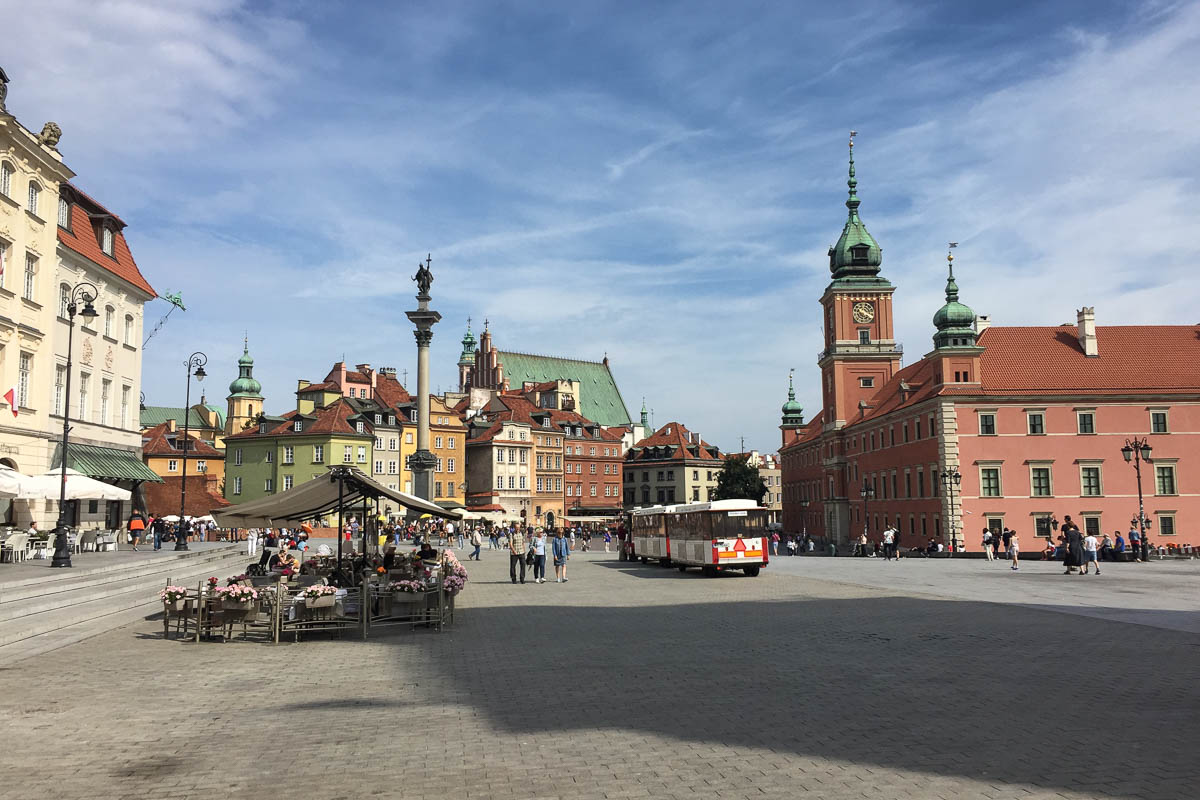
We spent overnight in Warsaw, staying in the same hotel as last year, having dinner at the same local restaurant. Interestingly, it felt so familiar even though we had spent only 3 days there last year.
As for the Polish language, we had the same impression as last year, i.e., way too many consonants. Sneak preview: Lithuanian has way too many vowels. We think the two countries should get together and do some exchanging. And why with Polish are there random accents on vowels as well as consonants? Just look at Kraków and Gdańsk! Guess if you speak Polish, these accents signify alternate pronunciations of the letters.
Arrival in Gdańsk
Our initial impression on the 15-minute walk from the Gdańsk Główny train station to our Airbnb was that the neighborhood appeared a bit gritty. Not unlike our reaction upon arrival in Sarajevo, Bosnia last year. Turns out not quite as gritty as Sarajevo…gritty is not necessarily a bad thing. Our Airbnb cost $54 per night with a weekly discount. If we’d booked earlier, we could have found less expensive Airbnb’s and enjoyed a significant monthly discount if we were spending the whole month.
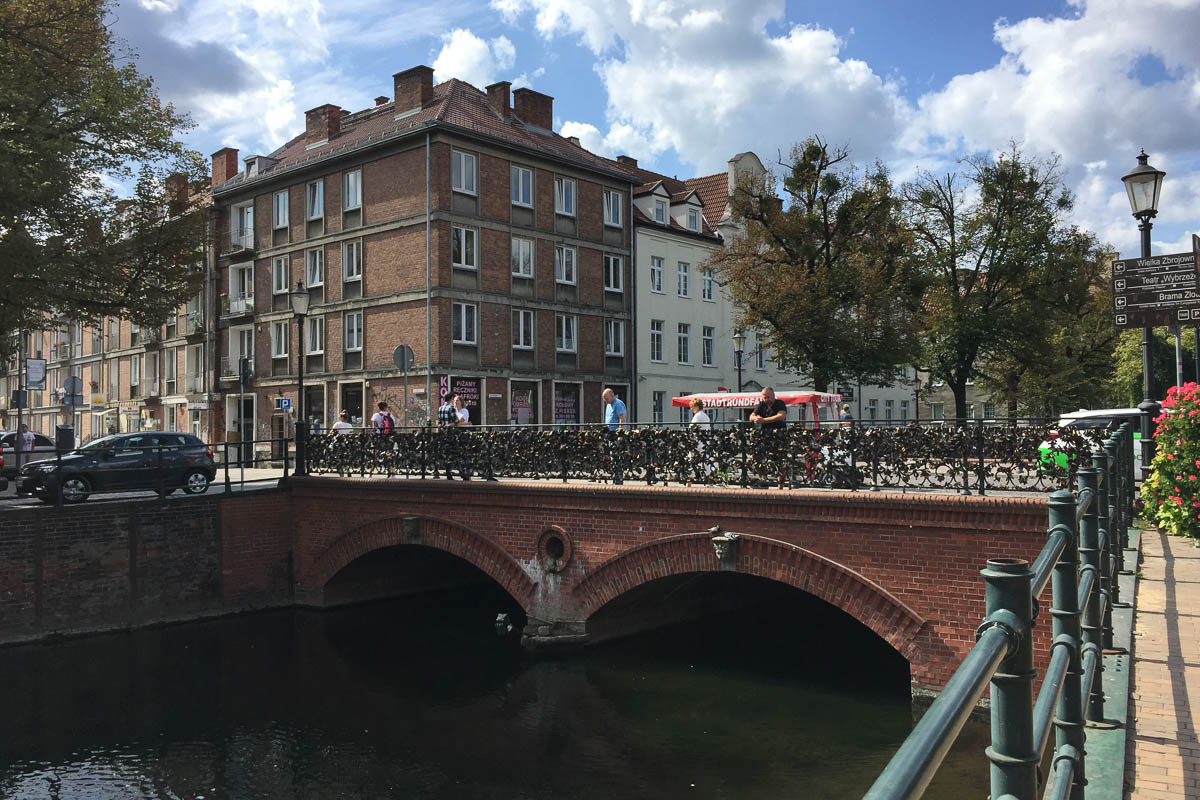
The neighborhood turned out to be a decent residential one within easy walking distance of the major sights. The building was somewhat basic on the outside, but our renovated apartment was quite nice, bright (except the living room) with large windows.
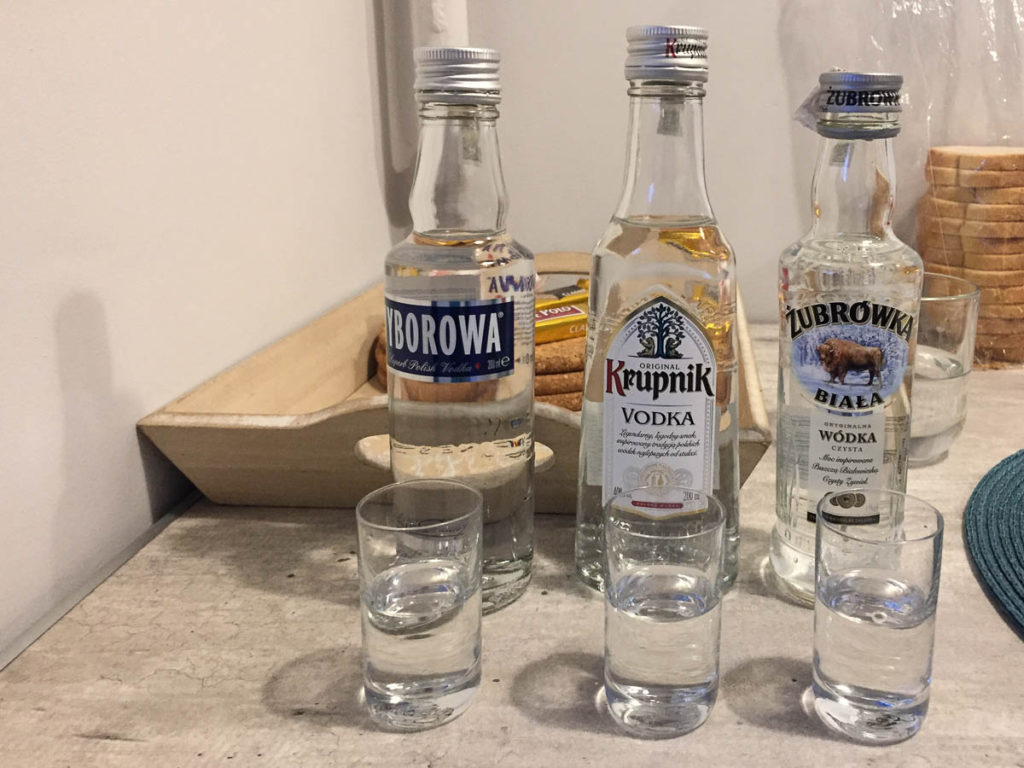
However, the kitchen was somewhat small and sparsely equipped. But there were five shot glasses, which Ian put to use. He purchased three small bottles of vodka, which remained lined up with three glasses on the kitchen table. Handy for daily taste comparison. His opinion changed over the course of the week. Poland is the land of vodka, after all.
Our nearest large grocery store, Netto, was located inside a mall. Random observation: we were struck by the extraordinary mish-mash organization of this particular grocery store. Nothing seemed to follow any kind of order, and similar items were located in different places throughout the store.
Background Info About Gdańsk
Unlike most European cities, the tourist center of Gdańsk is not its old town, of which very little remains. The major attractions are in the main town that reflects the city’s glory days during the 17th century, when Gdańsk was a trading powerhouse. The main town is beautifully restored; the key word here is restored.
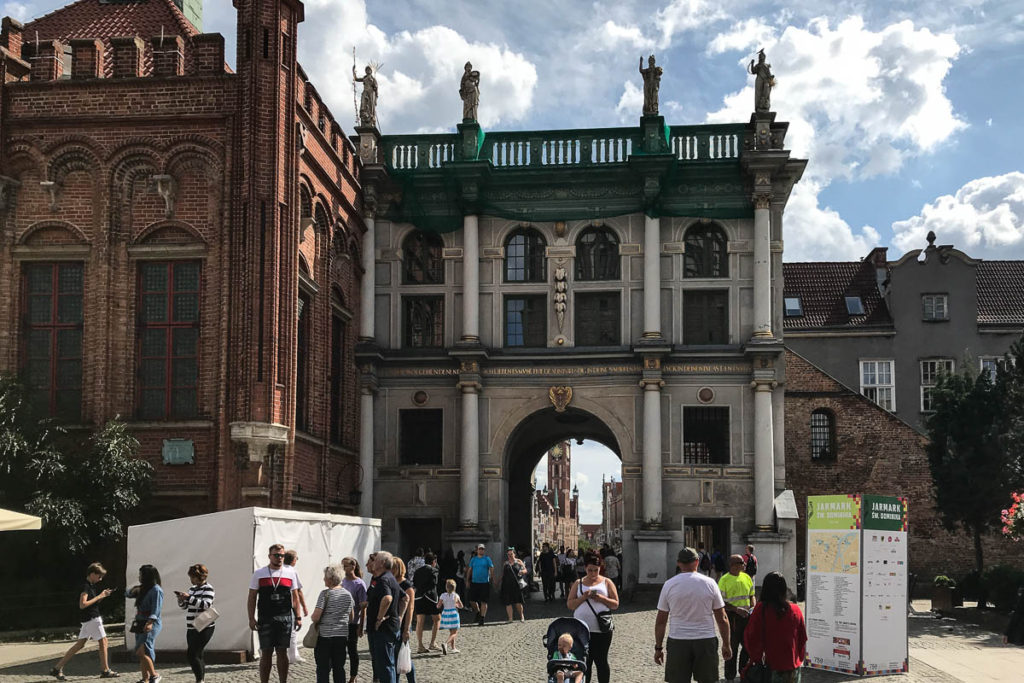
Since Gdańsk was viewed as a German city (most of the residents were German before and during WWII), the Soviets leveled the city. What buildings weren’t destroyed by mortars were intentionally set on fire. In some respects, the main street, Długi Targ (translated Long Market), aka Royal Way, reminded us of a movie set. The fronts of the buildings were restored to their original 17th century beauty, but the backs and insides were 20th century practical.
Some Key Sights
St. Dominic’s Fair
The date of our arrival in Gdańsk was during the last few days of St. Dominic’s Fair. This huge annual outdoor trade and cultural event lasts three weeks and has been happening since 1260. Most of what we saw was a bunch of vendors. We did also see and hear some music performances and saw people lining up for some free grilled meat specialties.

The Royal Way
The main drag in town is the previously mentioned pedestrian street Długi Targ, known as the Royal Way. Along this street, highlights include picturesque building fronts (already discussed), Neptune’s Fountain, and the impressive Town Hall, to name a few.
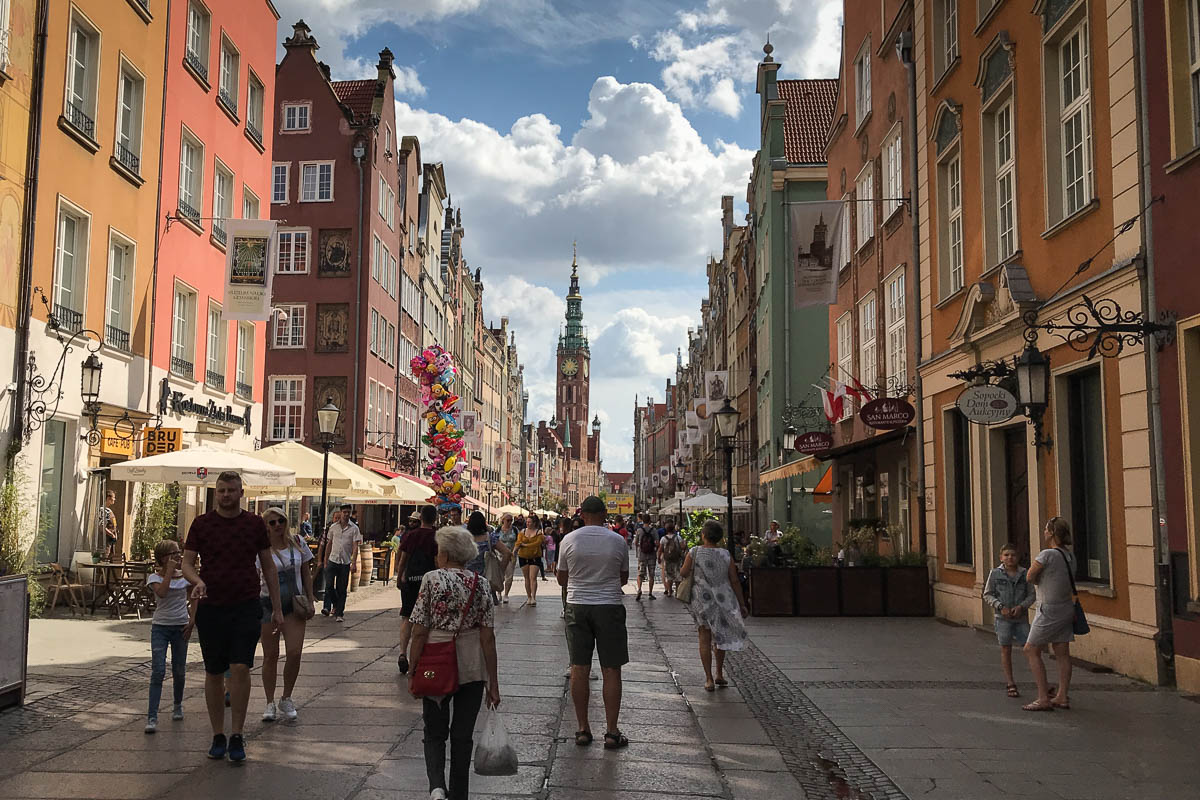
Old Town Hall
This 14th century landmark, which has undergone major renovations over the centuries, houses the Gdańsk History Museum. The elaborate wood portal to the Council Hall, dating from the 17th century, is original. During WWII, this portal was dismantled and removed, along with other important artifacts, and taken outside of Gdańsk for safekeeping.
St. Mary’s Church
Construction began in the 14th century and today St. Mary’s is one of the largest brick churches in the world. Currently a Roman Catholic church, it was also a Lutheran Church during part of its centuries-long existence.
Ulica Mariacka (St. Mary’s Street)
This cobblestone street was recreated after WWII with the help of photographs and other documents. Every home along this busy street has a large front porch, and many details, including gargoyles, were salvaged from the rubbish after the war. The street is lined with restaurants and bars, shops and stalls, many selling amber. Many cities along the Baltic Coast, but particularly Gdańsk, are known for amber.
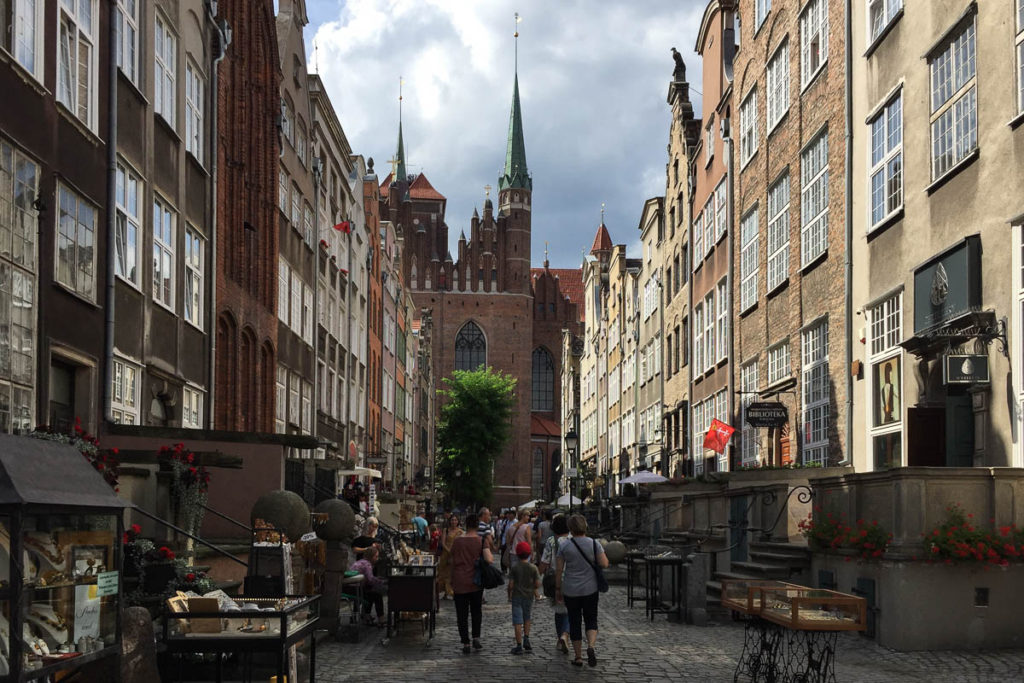
Gdańsk has a reportedly impressive amber museum, which we did not visit. However, we did get to see many examples of exceptional amber pieces during our time here.
Ulica Piwna (Beer Street)
How could we not stop for a beer on a street with such a name? Beer Street, in the heart of the historic district, has a few pubs and bars. We enjoyed a couple beers at Browar Piwna, one of about a dozen microbreweries in town.
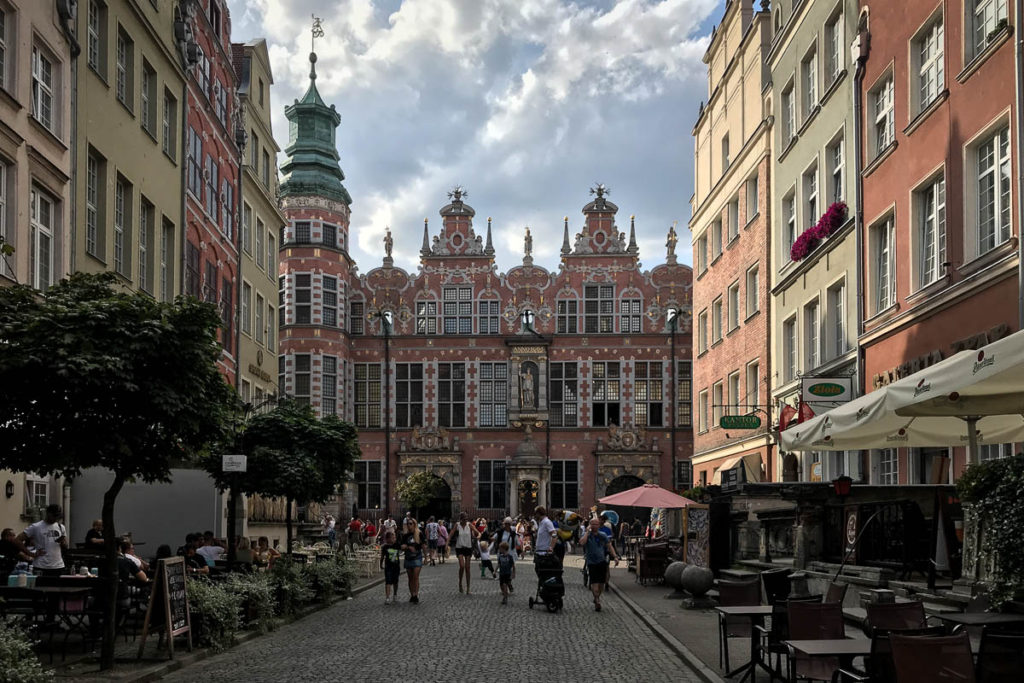
Gdańsk Crane
One of the oldest port cranes in the world, the Gdańsk Crane is a city landmark. This large human-powered crane dates from at least the 14th century; it was reconstructed after WWII. Today, the crane is part of the National Maritime Museum. We saw the crane in the Gdańsk shipyards while taking a pleasant stroll along the embankment of the Motlawa River.
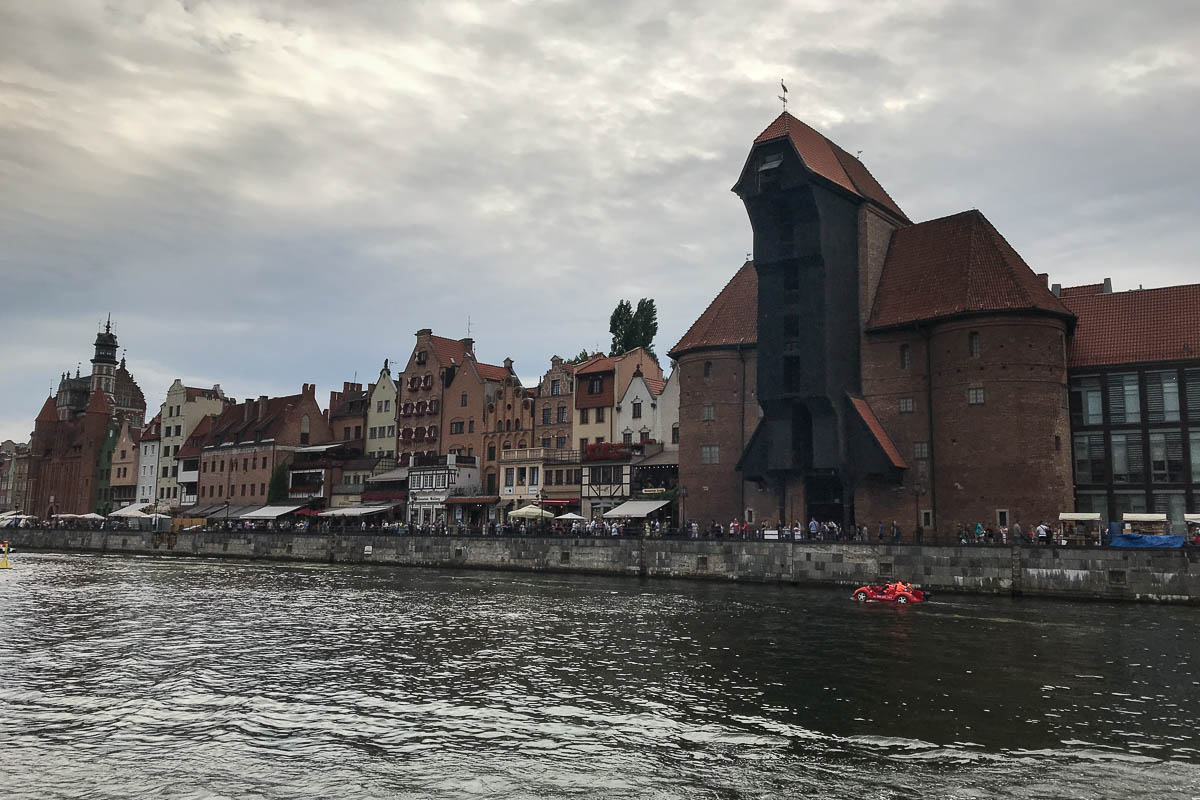
Gdańsk Solidarity Tour
Rather than do our usual historic walking tour, we opted to do the Solidarity Tour with Walkative! Gdańsk was the site of both the start of WWII and the beginning of the fall of Communism in eastern Europe.
While the main town is picturesque, what captured our interest was that Gdańsk was ground zero for the collapse of the Iron Curtain. Just as we found last year in Bosnia (especially Sarajevo), hearing the details of what happened during our lifetimes, yet scarcely covered in the US media, brought modern history to life. Of course, we are talking about the rise of Solidarność (Solidarity), a union movement meant to reform the Communist (workers) government, not overthrow it.
Sights Along the Way
On the tour, we learned about the history of Gdańsk from WWII through the fall of Communism up to modern day. We admired the artistically impressive Monument to the Fallen Shipyard Workers of 1970 and the European Solidarity Center, both near the entrance to the rather large shipyards. Apparently, Lech Walesa, age 76, has an office inside this museum, and reportedly likes to converse with visitors when he’s in. Ann fantasized (just a bit) about what that conversation might be like, but we didn’t go back and visit on another day.
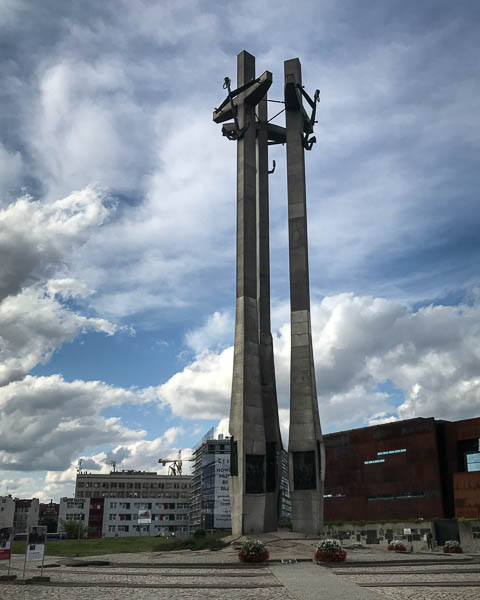
Also near the entrance to the shipyards, we went inside the BHP Hall (Health and Safety building). Here, we saw the room where meetings took place during the 1980 strikes and where Lech Walesa signed the August Accords, aka The Gdańsk Agreement. The hall also houses an excellent exhibition entitled “Shipyard Solidarity”.
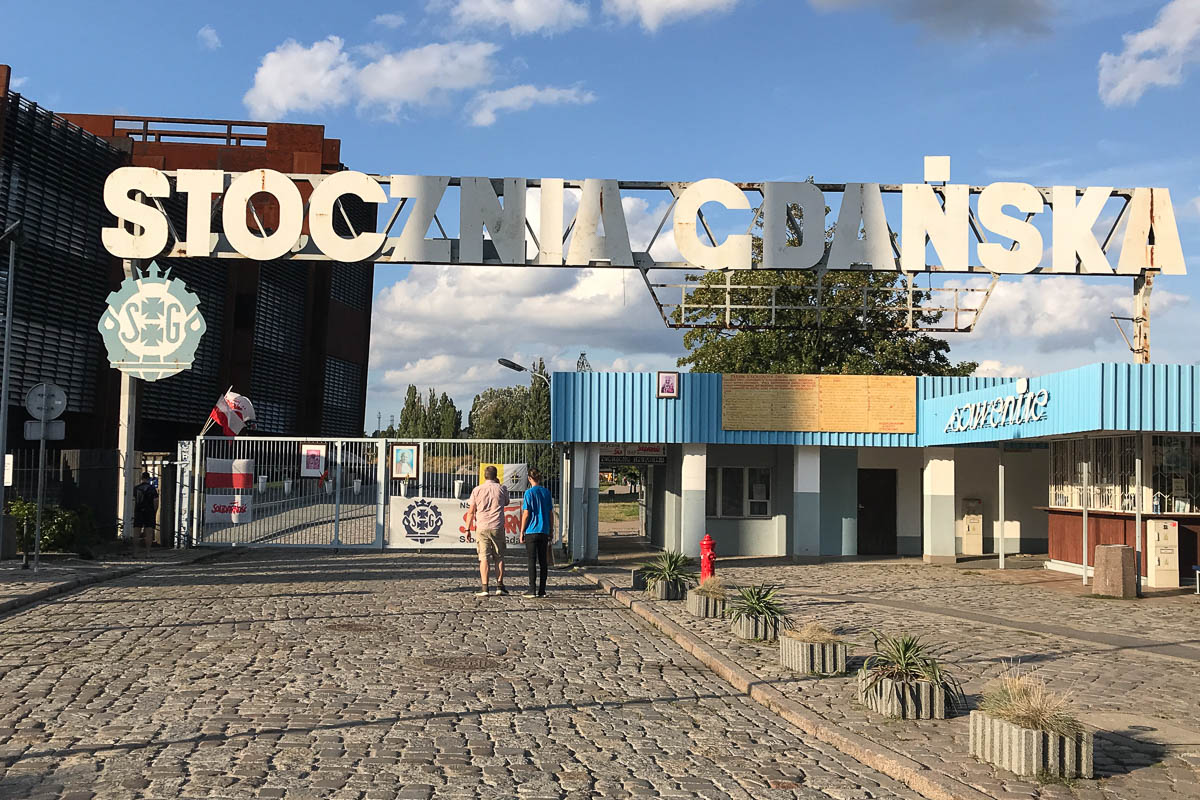
Nearby, St. Bridget’s Church is quite unique. This church, dating from late 14th/early 15th centuries was, like most of Gdańsk, completely destroyed during WWII and rebuilt. It served as a haven for the leaders of Solidarność. The church’s most striking feature is its elaborate amber altar.
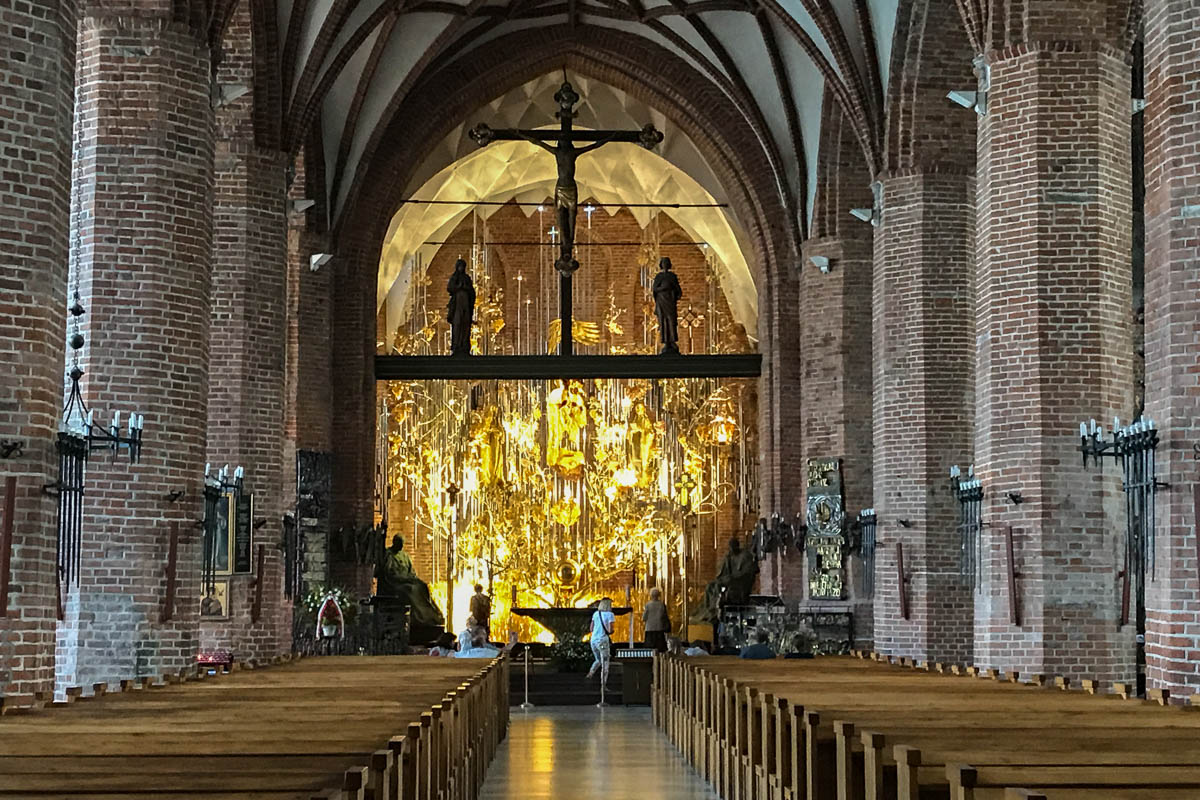
Our Meals in Gdańsk
As usual, we ate many meals in our apartment but also ate out quite a bit, probably because we wanted to sample the different Polish foods. Eating out here is also quite inexpensive. Plus, we had a few entire days out (a bit unusual for us) at the beach and visiting a castle (more on these in a bit).
Of course, we shopped at the local Market Hall, built in the late 19th century, which was a combination of indoor and outdoor stalls. We were a bit surprised to see some Roman ruins in the basement.

Food Highlights
Typical food highlights include pierogi (discussed in more detail here) and potato pancakes. We particularly enjoyed potato pancakes with meat in between and potato pancakes with goulash. We ate the latter at a bar mleczny.
A bar mleczny (literally translation, milk bar) is an inexpensive cafeteria-style restaurant from Communist times. Our lunch of cabbage rolls and potato pancake with goulash – yum! – cost 51 zlotys ($13), quite expensive for a milk bar. The goulash dish cost more than double most of the other menu items.
Another day, we just happened to walk by a Thai restaurant advertising a Business Lunch for 35 zlotys ($9). Anyone who knows us also knows we love Asian food, so we had to give it a try. Turns out the restaurant, named Thai Thai, was quite fancy on the inside with delicious gourmet Thai food. Yay, we got our Asian food fix!
We mustn’t forget lody; the Polish people love their ice cream. Everywhere we’ve been in Poland, you’re just never far from a stand or shop offering lody. Along the Royal Way, we saw four places within less than 25 yards of one another. During our stay, we sampled quite a variety, all yummy and inexpensive, less than $1 per cone
Beaches in and Near Gdańsk
During our week’s stay in Gdańsk, we had not one but two beach days! After all, a big part of our coming to Gdańsk was to find a less hot, less touristy, less expensive beach in Europe in August. Gdańsk has several beach options in and near town. We did our research and made our choices.
Jelitkowo
On our first beach day outing, we took the tram to Jelitkowo. Walking from the tram stop to the beach (follow everyone else since the beach is not visible from the tram stop), we noticed that the trees went right up to the sand! Plus, parallel walking and biking paths ran along the length of the beach.

Happily, we also found that the beach was great for walking! An unusual feature was the existence of small wooden changing huts along the beach. We’ve not seen these in any other country. We were also happy to see sorted recycling bins at the main beach entry points. The water was fairly clear and slightly chilly, around 65 F, with little or no waves. We walked west for about 3 km (a bit less than 2 mi) to the Sopot pier and then beyond.
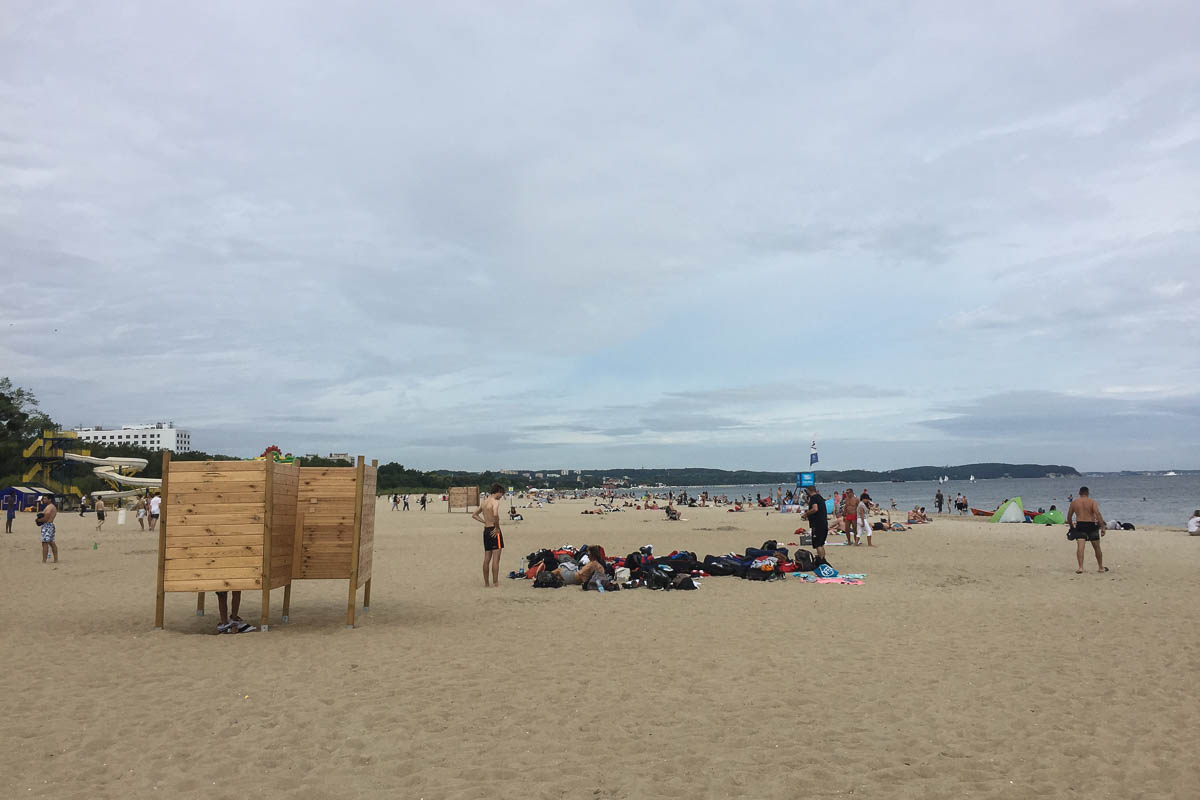
Sopot
The Sopot pier, opened in 1827 as a mooring point for pleasure boats, is the longest wooden pier in Europe, at a bit over 500 meters. Sopot, a separate city from Gdańsk, has a wealthier, resort vibe. We had lunch and a pleasant walk around the center of town, then took the local train back to Gdańsk.
Brzeźno
Another day, we took a different tram to Brzeźno, a bit closer to the center of Gdańsk. Again, we walked west along the beach, passing along Jelitkowo Beach and to the Sopot pier. The beach was considerably more crowded than on our first visit. Hmm…surprising as the first day was a Sunday and the second was a weekday. Conculsion: it must have been because of the sunnier, warmer weather the second day.
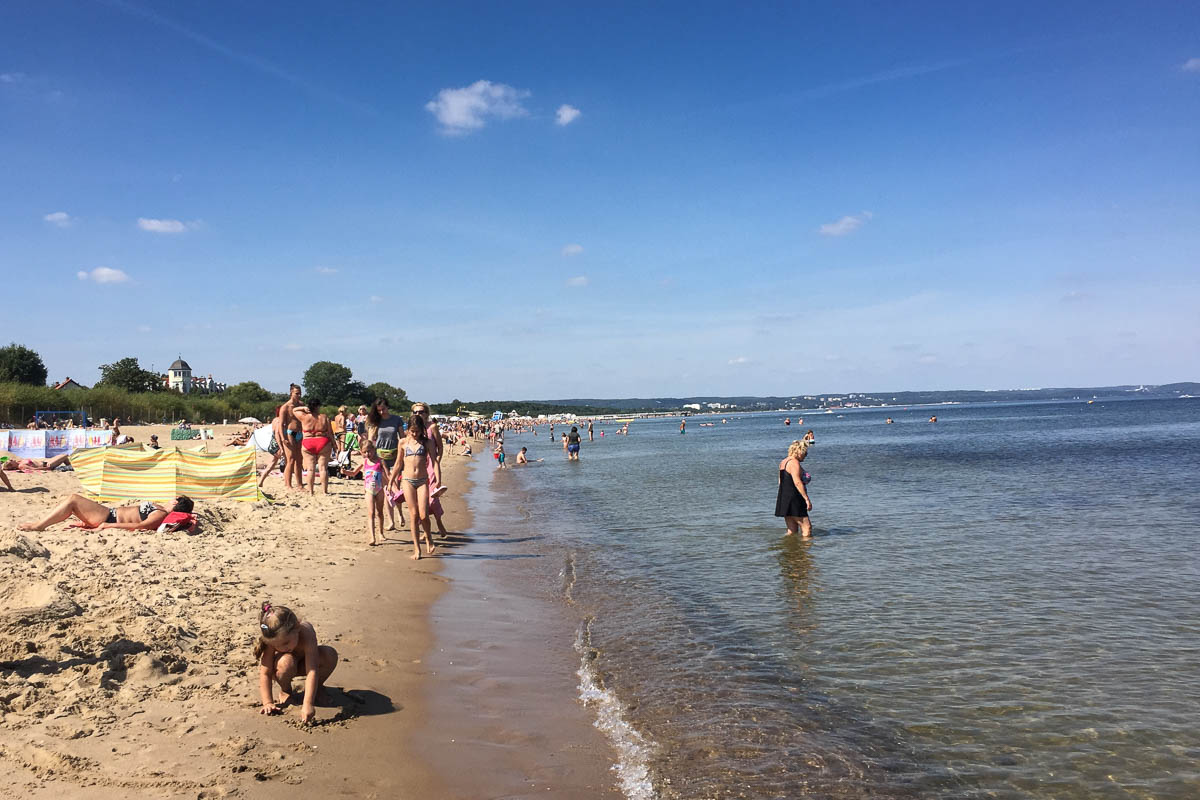
We walked back along the tree-lined path to the tram stop near Jelitkowo Beach. This time, we took a different tram than on our first visit. Taking three different trams, each with a different route, plus a local train, allowed us to see various neighborhoods of Gdańsk. Each one had its own character and feel, all pleasant, at least from a passing tram.
Day Trip to Malbork Castle
We debated back and forth (were we being lazy or were we castled out?!), but finally made the decision to go. It’s not every day one has the chance to visit the largest castle in the world, at least by land area. And one associated with Teutonic knights! Built in the 13th century, expanded in the 14th, the castle has been under restoration from the 18th century to present day.
The train ride from Gdańsk Główny train station took just under an hour. Then we walked about 10 minutes through town to the castle. The town of Malbork was kind of nondescript except for the fairly large factory right near the train station.
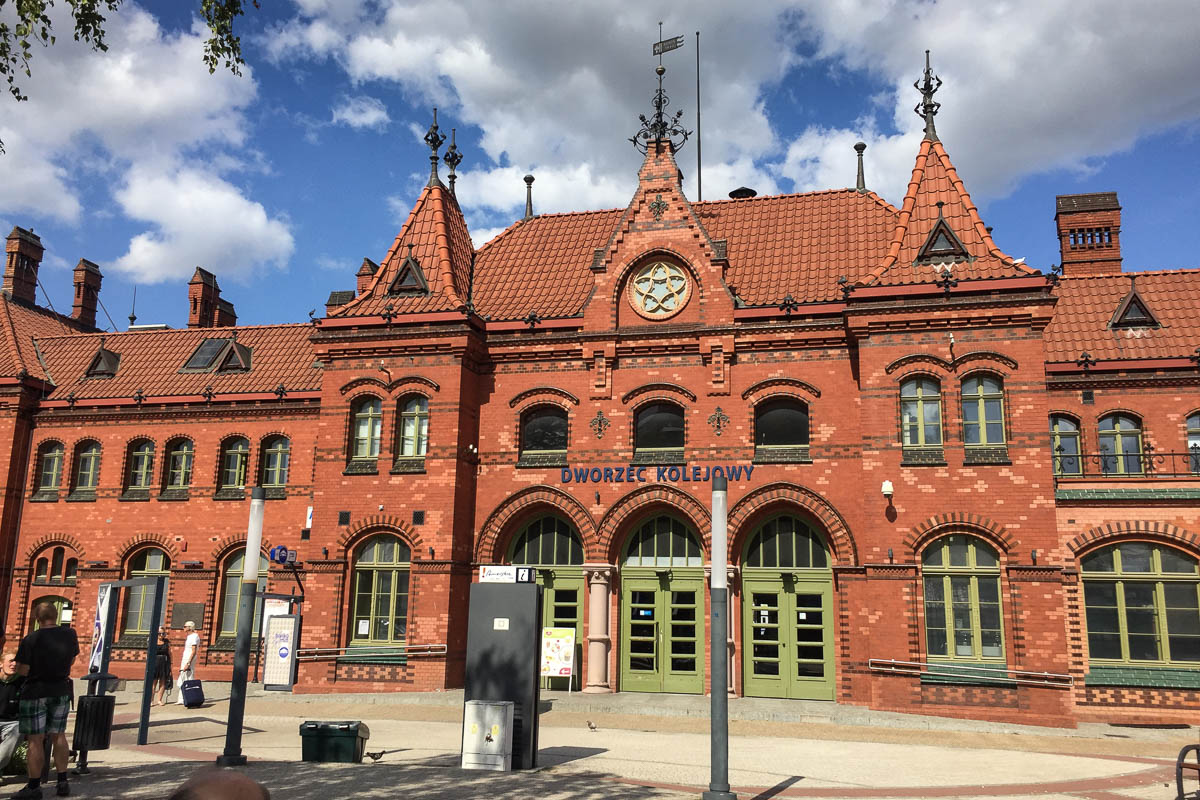
Touring the Castle
The castle itself was quite impressive, both inside and out, but even more impressive…Wow! The audio guide with built-in GPS! It knew exactly where we were in the castle, told us when we made a wrong turn, and waited for us if we chose to pause our exploration.
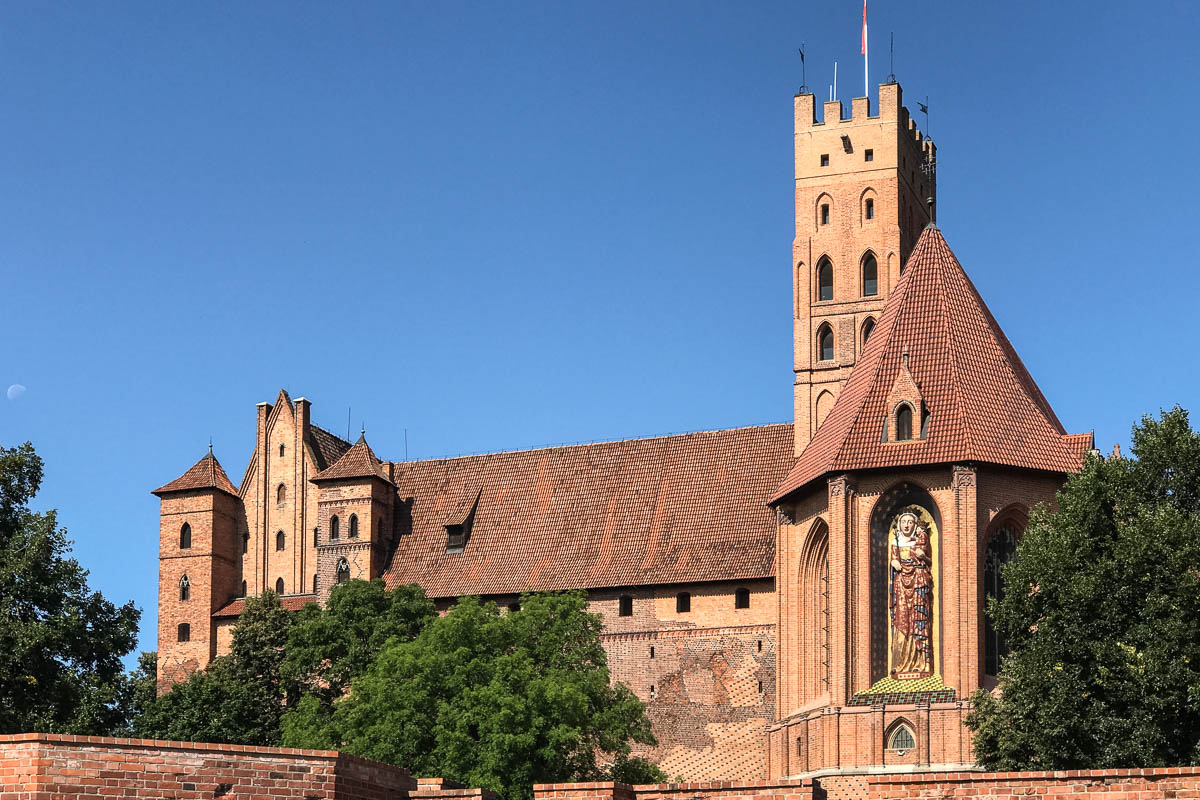
We learned a lot about the history of the castle and its inhabitants (first ones were monks) as we followed the directions on the audio guide. We passed through elaborate rooms, including a reconstructed kitchen with daily coded menu, as the monks ate varying foods and quantities on different days. The castle also had extensive displays of armor and amazing amber pieces for practical use.

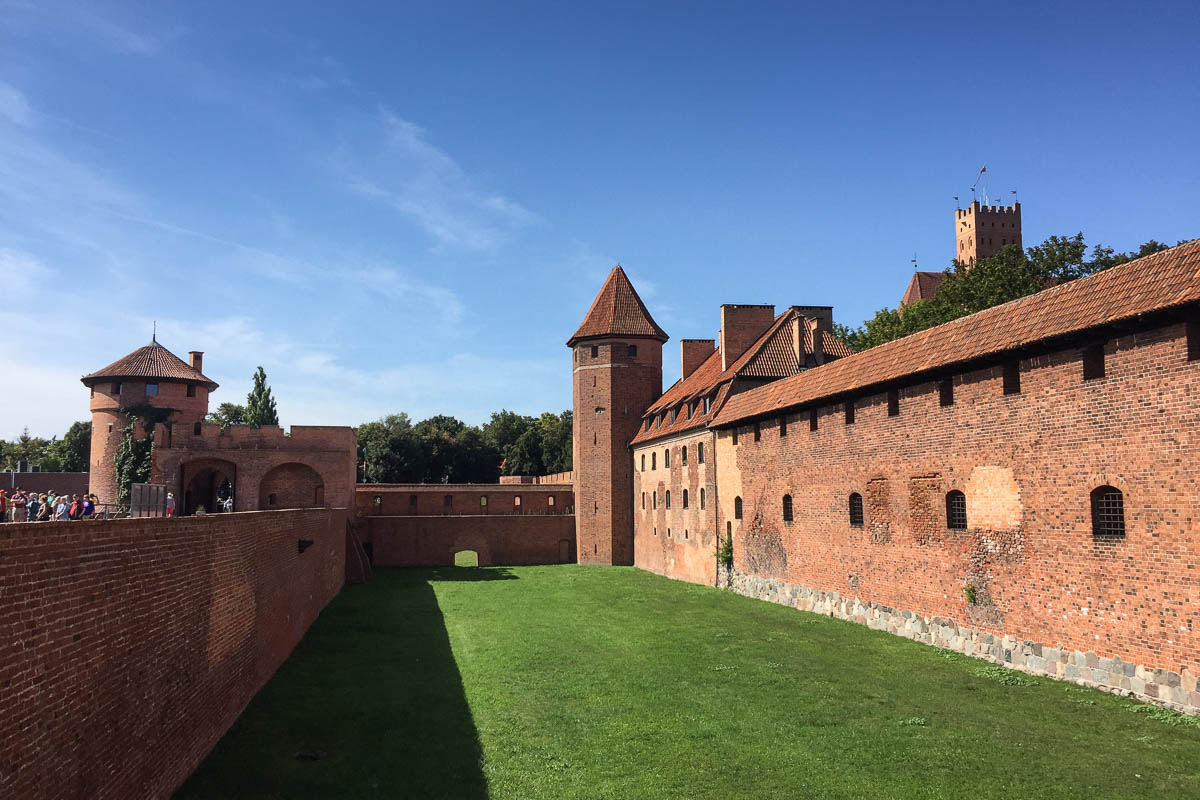




After exploring for a couple of hours, we had a simple barbeque lunch on picnic tables on the outside of the castle. And of course, we stopped for lody on the way back to the train. When in Poland…
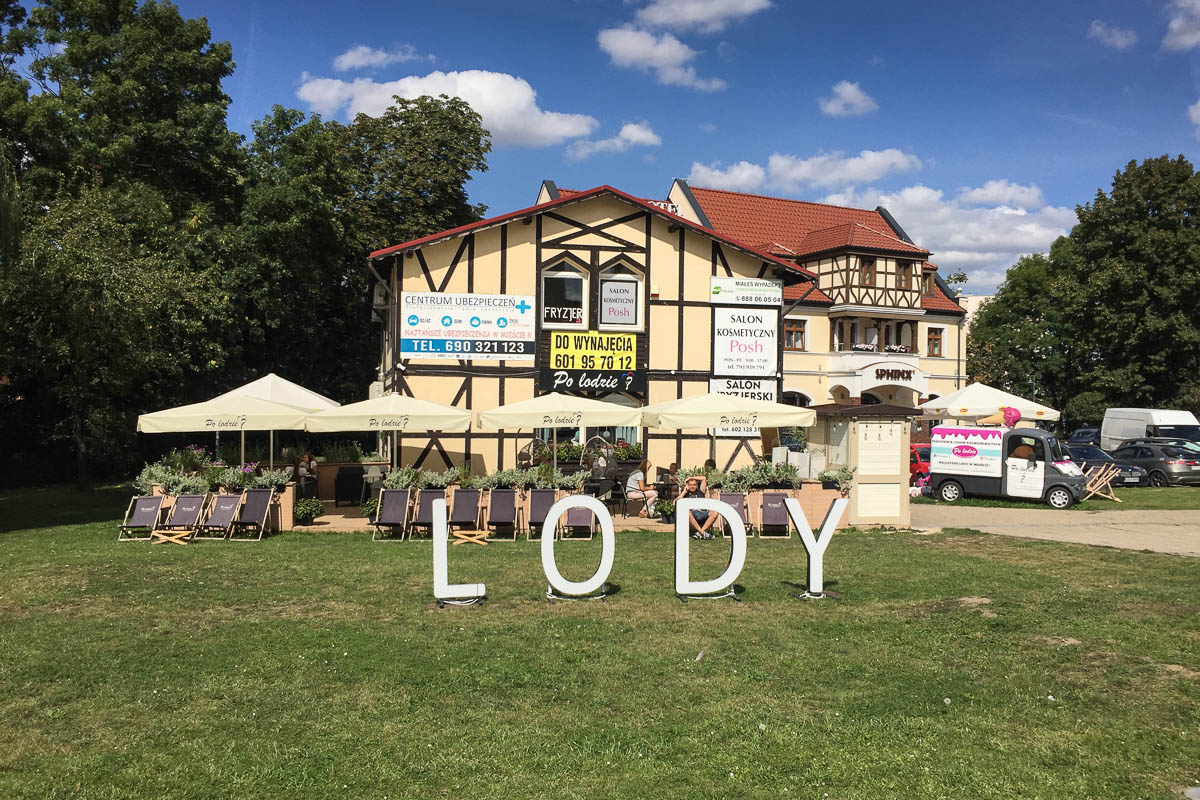
Gdańsk Wrap-Up
As mentioned earlier, our primary goal in visiting Gdańsk was to find a reasonably priced beach location with a temperate climate in August, and where the crowds weren’t too bad. Our first thought was the beaches of Romania and Bulgaria, until we checked August prices. We ruled out the Mediterranean because of crowds and hot temperatures. We considered northern France (Normandy & Brittany) but again crowds and prices.
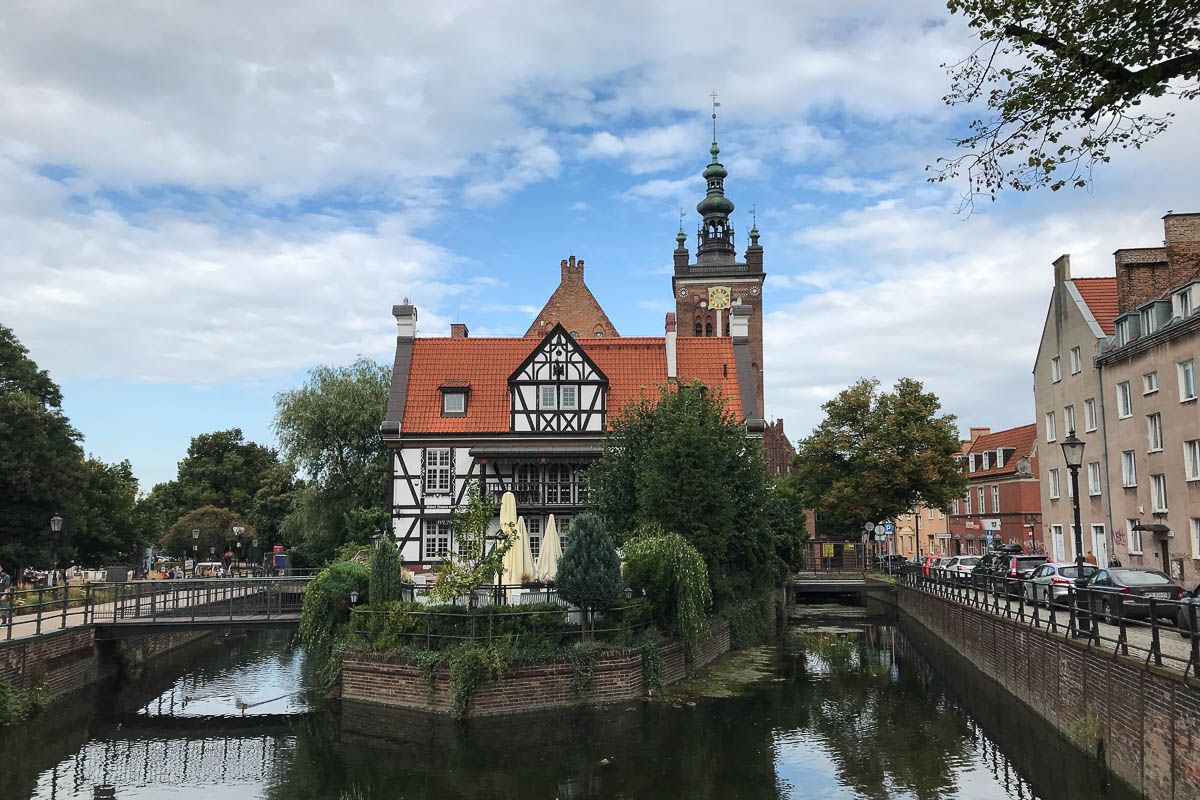
Gdańsk checked all the boxes. Staying in the city was reasonably priced with easy, frequent public transportation options. We inadvertently had picked the busiest time to visit, i.e., during St. Dominic’s Fair. The crowds weren’t bad, except along the Royal Way during the fair, and in Sopot. The only issue (and it’s a minor one) is that the majority of our days were overcast. The sun did come out during the last few days, and the forecast was for it to continue. So Gdańsk is still in the running along with A Coruña, Spain, which we visited last year. If we do return to Gdańsk, we will probably opt for an Airbnb towards the beach, but not in Sopot.
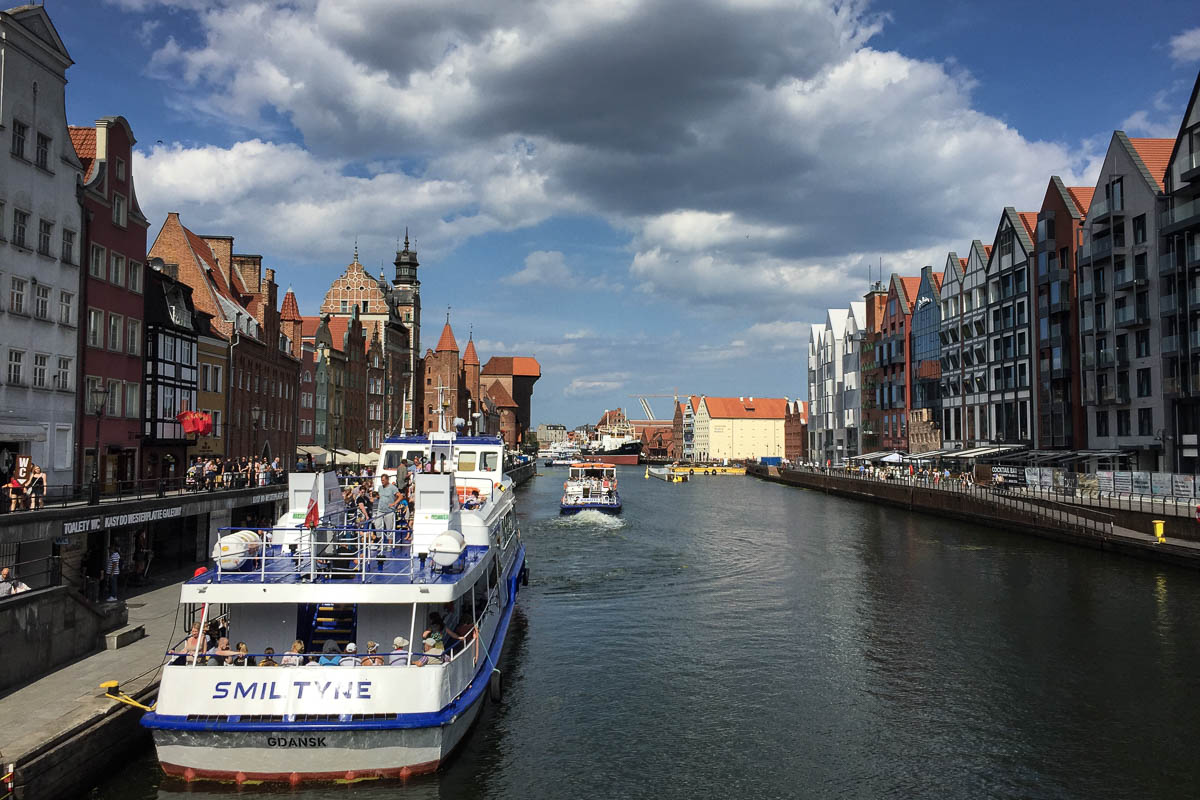
Next Up: Riga, Latvia – Our First Exploration to the Baltics
